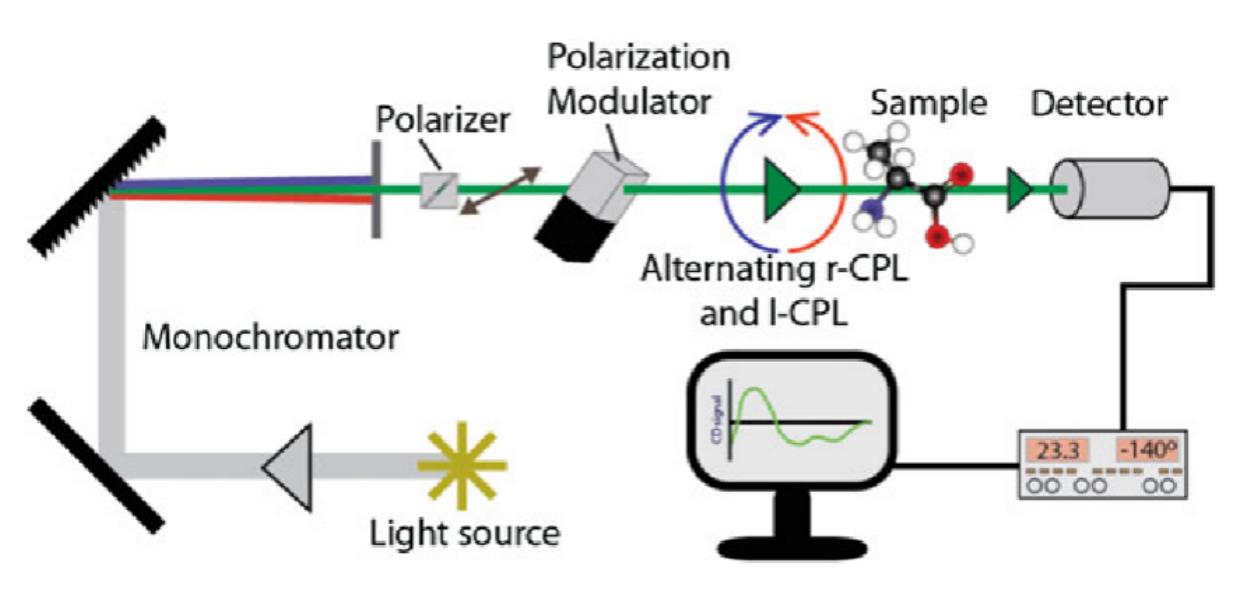Circular Dichroism Spectroscopy Service
Creative Biostructure offers an array of preeminent circular dichroism (CD) spectroscopy testing services, delivering invaluable information about the conformational properties of proteins, nucleic acids, and other chiral molecules. Our service is meticulously crafted to empower researchers and organizations with critical structural insights, facilitating advancements in drug discovery, protein engineering, and fundamental biological research.
What Is Circular Dichroism Spectroscopy?
The magic of CD spectroscopy stems from the interaction between polarized light and chiral molecules. Chirality, the property of molecules that aren't superimposable on their mirror images, leads to differential absorption of left and right circularly polarized light. This unequal absorption results in what we call circular dichroism. The extent of this dichroism at various wavelengths unveils crucial information about the molecule's conformational changes, folding, and interactions. By harnessing the interaction of circularly polarized light with chiral molecules, CD spectroscopy provides a unique window into the secondary, tertiary, and quaternary structures of proteins, nucleic acids, and other chiral molecules.CD spectroscopy allows not only to determine the structure of biomolecules but also to detect the interaction between ligands or drugs and proteins.
Circular dichroism spectrometers use circularly polarized (helical) beams on the left and right sides alternating through optically active sample solutions. Due to the different interactions with chiral objects: the left circularly polarized beam-chiral molecule and the right circularly polarized beam-chiral molecule, the two types of light are absorbed to various degrees. The absorption difference ΔA=AL-AR (or in molar value Δε=εL-εR) is called circular dichroism, and the Circular dichroism instrument records this difference as a function of wavelength for data analysis.
 Figure 1. Schematic representation of the optical layout of a typical CD spectrometer. (Hoffmann S V, et al., 2016)
Figure 1. Schematic representation of the optical layout of a typical CD spectrometer. (Hoffmann S V, et al., 2016)
What Can We Offer?
The CD spectroscopy services provided by Creative Biostructure can be applied in the following aspects:
Determining protein structures
Analysis of the factors affect protein conformation
Protein interaction analysis
Capture nucleic acid secondary structure
Monitoring DNA/RNA structural changes
Nucleic Acid interaction analysis
Structural analysis of carbohydrate compounds
Observation of the photonics of the electronic transitions
Microconformation analysis
Assisted screening in new drug research
Binding sequence studies
Molecules interaction analysis
Our Workflow for CD Spectroscopy
Our CD spectroscopy service follows a meticulous procedure to ensure accurate and insightful results. We start by preparing the sample in a suitable buffer, carefully considering factors like concentration and solvent conditions. The sample is then placed in the CD spectrometer, where it's exposed to circularly polarized light across a range of wavelengths. The resulting differential absorbance data is transformed into a spectrum, providing a graphical representation of the molecule's structural characteristics.
Highlights of Our CD Spectroscopy Service
- Advanced Spectroscopic Analysis: Our team of experienced biophysicists utilizes state-of-the-art CD spectrometers to perform detailed measurements of your samples. By analyzing the differential absorption of left- and right-circularly polarized light, we uncover valuable data about the secondary structure composition and conformational changes of your biomolecules.
- Diverse Sample Compatibility: Whether you're investigating proteins, nucleic acids, peptides, or other chiral molecules, our CD spectroscopy service caters to a wide range of sample types. From small molecules to large complexes, we tailor our methods to suit your unique research needs.
- High Sensitivity and Resolution: Our instrumentation is optimized for high sensitivity and resolution, enabling us to detect even subtle structural changes within your samples. This is particularly crucial when monitoring protein folding, ligand binding, and conformational shifts.
- Quantitative and Qualitative Insights: Beyond basic structural information, our CD spectroscopy service provides quantitative data such as secondary structure composition percentages. This quantitative insight is essential for accurate comparative analyses and mechanistic studies.
- Comprehensive Data Analysis: Our service doesn't stop at data collection. We provide in-depth data analysis, interpretation, and visualization.
Creative Biostructure provides CD spectroscopy services for analyzing biomolecule structures, small biomolecule chirality, and intermolecular interactions. Our experts collaborate with you to design customized experiments, providing pertinent and valuable data. Our efficient processes and well-organized workflow ensure a swift turnaround time for your CD spectroscopy results, enabling prompt research decisions. Please feel free to contact us for a detailed quote if you're interested in our services.
Ordering Process
References
- Hoffmann S V, Fano M, van de Weert M. Circular dichroism spectroscopy for structural characterization of proteins. Analytical Techniques in the Pharmaceutical Sciences. 2016: 223-251.
- Gekko, K. Carbohydrate Circular Dichroism. Encyclopedia of Biophysics. Springer, Berlin, Heidelberg. 2018, 214-216.
